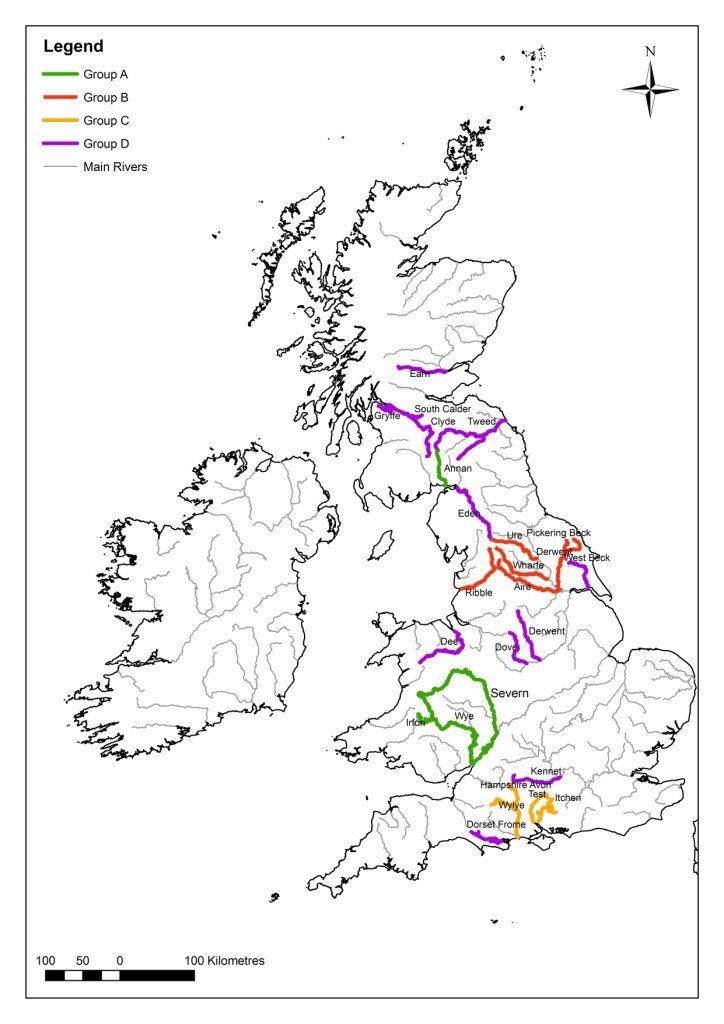Site built with:
Results of the 2008 genetic census, in which Grayling Society anglers obtained samples subsequently analysed at Bangor University, are published in Conservation Genetics 12, 731-744. It is gratifying that results reported in the above paper have guided the Environment Agency in drafting its National Trout and Grayling Strategy.
Project Summary
The study demonstrated that UK grayling display pronounced genetic structuring and restricted connectivity between all but a few populations. Despite the high degree of differentiation among the 27 populations sampled, analyses of microsatellite data revealed four or five groups (depending on the analysis method) that, with the exception of two populations, grouped largely by geographic location.
The introduction of grayling, or stocking over the last 200 years, has resulted in some breakdown of the relationship between geographic sampling location and genetic group. The Derbyshire Derwent, Wye and Dove have been used as source stocks for many of the introductions, for instance, the Clyde was originally stocked from the Derbyshire Wye. The Hampshire Avon was used to stock the Test and many other rivers in the area, and it is therefore conceivable that it was also used to stock the Itchen. Most of the native-stocked populations group with their geographical neighbours.
Source individuals for more recent introductions from the Environment Agency's Calverton Hatchery have originated from the River Test. Each year, wild individuals are caught from the Test, stripped and the offspring raised within the hatchery.
Stocking records indicate that the Aire, Wharfe and Dove have received large numbers of individuals from the Test since 2006. One stocked individual within the Aire sample and three within the Dove sample that were likely to be of Test origin, indicated that some stocked individuals are surviving within these rivers. However, no individuals within the Wharfe sample were assignable to Test origin.
The UK grayling can be genetically divided into 4 groups (A, B, C and D). Group A is composed of native Welsh populations and Annan (Scotland), suggesting grayling may have been introduced to the Annan from a Welsh population. Group B includes most Northern England populations, Group C contained only Southern England populations, while Group D contained all remaining populations in the UK.
Would you like to know the origin of your grayling population?
We are able to offer genetic analysis of grayling populations to determine their origin (native or non-native) and to identify which one of the four groups your population belongs. DNA samples can be obtained from mouth swabs, so grayling remain unharmed. For further information and costs please contact us.


